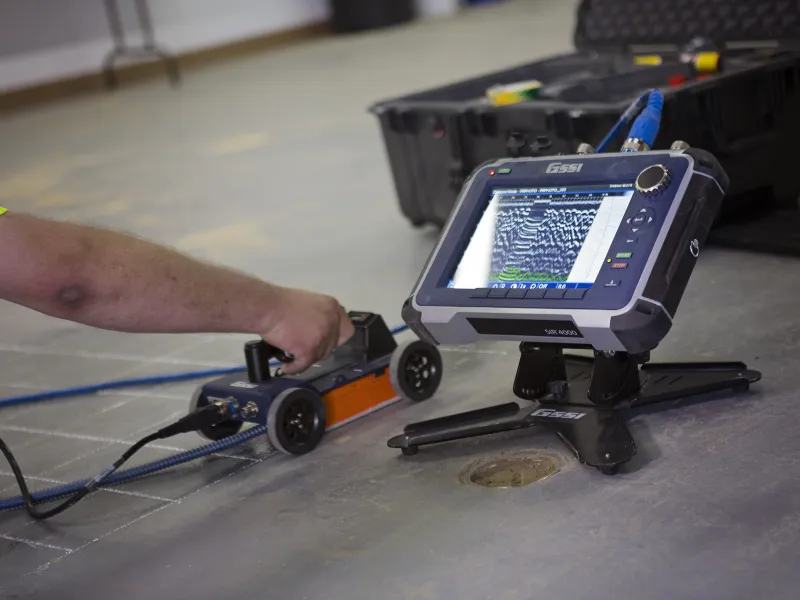Enhancing Task Preparation and Implementation Via Advanced Concrete Scanning Strategies
In the realm of task preparation and implementation, insight and precision are essential components that can make the difference between success and setbacks. Advanced concrete scanning methods have actually become an innovative device established to elevate the criteria of task management within the building market. By taking advantage of innovative innovation, these methods use a glance into the structural stability of a structure even before the very first brick is laid. The implications of such innovations are extensive, guaranteeing a paradigm shift in just how jobs are come close to and delivered.
Advantages of Advanced Concrete Scanning Techniques

Improved Precision in Job Assessments
Enhancing task analyses with advanced concrete scanning strategies substantially improves the precision and reliability of building and construction examinations. By employing cutting-edge scanning technologies such as ground-penetrating radar (GPR) and 3D imaging, task teams can currently get thorough understandings right into the problem of concrete structures, identifying possible imperfections or weak points that may not be noticeable to the nude eye. This boosted level of precision in project analyses allows construction specialists to make even more enlightened choices regarding repair service and maintenance strategies, causing enhanced total job outcomes.
Furthermore, the raised accuracy in project analyses accomplished with advanced concrete scanning strategies assists in lessening the danger of unexpected problems throughout the construction stage. By proactively detecting concealed anomalies within concrete structures, such as rebar deterioration or gaps, job teams can resolve these concerns early, preventing pricey delays and rework later in the project lifecycle. Eventually, the improved accuracy in task analyses facilitated by sophisticated concrete scanning strategies adds to greater effectiveness, cost-effectiveness, and top quality in construction projects.
Very Early Recognition of Architectural Difficulties
Early discovery of structural challenges plays a critical role in guaranteeing the honesty and security of concrete structures throughout the construction process. Determining potential problems at an onset permits prompt intervention, preventing pricey rework, routine hold-ups, and security dangers. Advanced concrete scanning strategies, such as ground-penetrating radar (GPR) and 3D imaging, make it possible for project groups to discover concealed issues, voids, support format inconsistencies, and various other anomalies that might endanger the framework's stability.
By implementing these methods throughout the preparation and execution stages, construction experts can proactively address structural challenges prior to they escalate right into major troubles. For instance, discovering poor concrete cover over support bars beforehand can stop rust and structural weakening in the long run - RainierGPR Service Areas. Furthermore, determining variations in concrete thickness or thickness can aid enhance material usage and make certain uniform stamina properties throughout the structure

Eventually, very early recognition of structural difficulties with innovative concrete scanning not only boosts the general high quality and durability of the construction but also click over here adds to a safer constructed setting for individuals and passengers.
Boosted Safety And Security Procedures in Building And Construction
The implementation of robust safety methods is critical in the building market to minimize threats and safeguard the health of stakeholders and workers. To boost safety steps, construction companies are increasingly adopting technical innovations such as wearable tools that check employees' crucial indications and find prospective health and wellness issues in real-time. By focusing on security through the consolidation of sophisticated technologies and thorough training programs, building and construction jobs can dramatically decrease crashes and develop his response a safe working atmosphere for all involved.
Streamlining Job Administration Processes
To enhance functional performance and ensure project success in the building market, an emphasis a knockout post on streamlining job administration processes is vital. By applying reliable project management processes, construction projects can minimize hold-ups, lower prices, and boost total performance.

Verdict
To conclude, the utilization of advanced concrete scanning techniques provides various advantages for job preparation and implementation. These strategies give improved precision in task analyses, very early recognition of architectural difficulties, improved security actions in building and construction, and structured job administration processes. Including these methods into project operations can inevitably bring about extra successful and efficient outcomes in building and construction tasks.
Eventually, the enhanced precision in job evaluations helped with by innovative concrete scanning strategies adds to higher efficiency, cost-effectiveness, and high quality in construction tasks. RainierGPR Service Areas.
To enhance functional effectiveness and make sure project success in the construction industry, an emphasis on enhancing project management procedures is essential. By applying effective project monitoring processes, construction tasks can lessen delays, lower prices, and improve overall productivity. By enhancing job management processes through innovation integration, clear interaction, and data-driven methods, construction jobs can attain greater performance, cost-effectiveness, and successful results.
These strategies offer better accuracy in task assessments, early recognition of architectural obstacles, enhanced safety actions in construction, and streamlined task management processes.